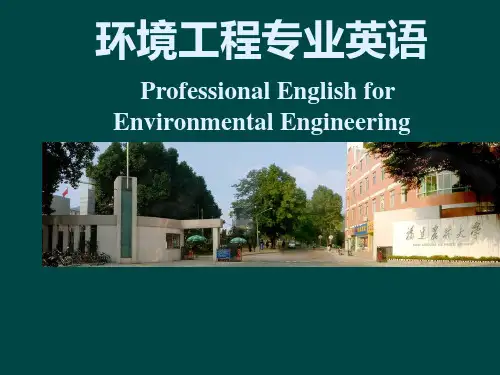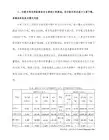环境工程专业英语第五单元课件
- 格式:pptx
- 大小:132.85 KB
- 文档页数:17
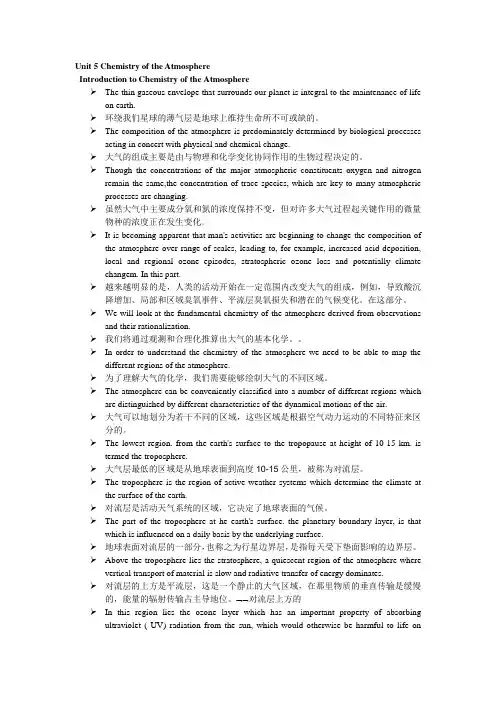
Unit 5 Chemistry of the AtmosphereIntroduction to Chemistry of the Atmosphere➢The thin gaseous envelope that surrounds our planet is integral to the maintenance of life on earth.➢环绕我们星球的薄气层是地球上维持生命所不可或缺的。
➢The composition of the atmosphere is predominately determined by biological processes acting in concert with physical and chemical change.➢大气的组成主要是由与物理和化学变化协同作用的生物过程决定的。
➢Though the concentrations of the major atmospheric constituents oxygen and nitrogen remain the same,the concentration of trace species, which are key to many atmospheric processes are changing.➢虽然大气中主要成分氧和氮的浓度保持不变,但对许多大气过程起关键作用的微量物种的浓度正在发生变化。
➢It is becoming apparent that man's activities are beginning to change the composition of the atmosphere over range of scales, leading to, for example, increased acid deposition, local and regional ozone episodes, stratospheric ozone loss and potentially climate changem. In this part.➢越来越明显的是,人类的活动开始在一定范围内改变大气的组成,例如,导致酸沉降增加、局部和区域臭氧事件、平流层臭氧损失和潜在的气候变化。
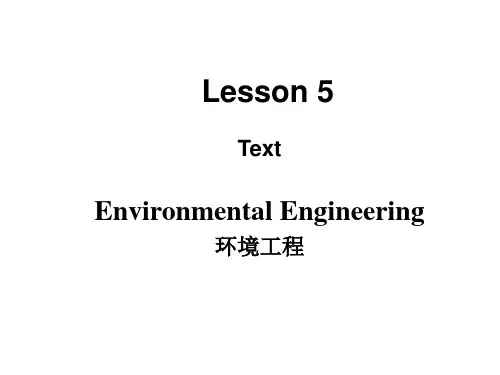

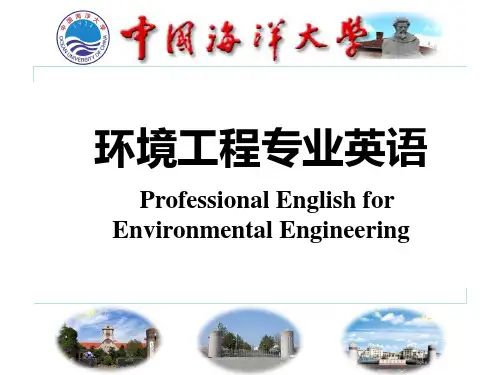
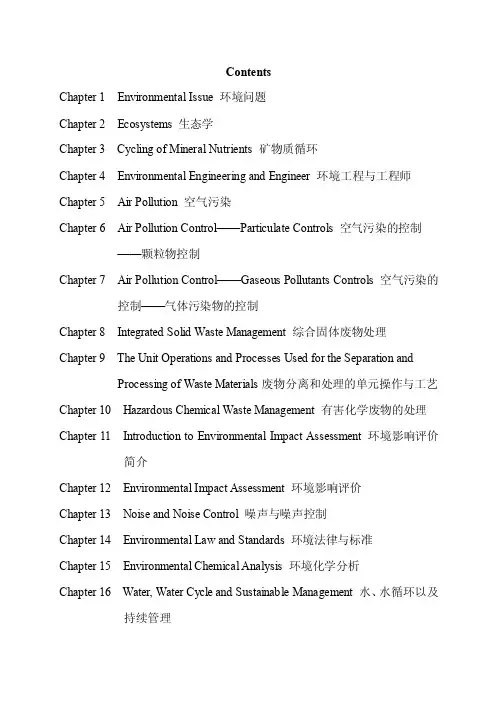
ContentsChapter 1 Environmental Issue 环境问题Chapter 2 Ecosystems 生态学Chapter 3 Cycling of Mineral Nutrients 矿物质循环Chapter 4 Environmental Engineering and Engineer 环境工程与工程师Chapter 5 Air Pollution 空气污染Chapter 6 Air Pollution Control——Particulate Controls 空气污染的控制——颗粒物控制Chapter 7 Air Pollution Control——Gaseous Pollutants Controls 空气污染的控制——气体污染物的控制Chapter 8 Integrated Solid Waste Management 综合固体废物处理Chapter 9 The Unit Operations and Processes Used for the Separation and Processing of Waste Materials废物分离和处理的单元操作与工艺Chapter 10 Hazardous Chemical Waste Management 有害化学废物的处理Chapter 11 Introduction to Environmental Impact Assessment 环境影响评价简介Chapter 12 Environmental Impact Assessment 环境影响评价Chapter 13 Noise and Noise Control 噪声与噪声控制Chapter 14 Environmental Law and Standards 环境法律与标准Chapter 15 Environmental Chemical Analysis 环境化学分析Chapter 16 Water, Water Cycle and Sustainable Management 水、水循环以及持续管理Chapter 17 Water Supply 供水Chapter 18 Wastewater Collection Systems 废水收集系统Chapter 19 Waste Water Engineering 废水工程Chapter 20 Wastewater Treatment Objectives, Methods, and Implementation 废水处理目标,方法和实施Chapter 21 Introduction to Wastewater Treatment Plant Design 污水处理厂设计简介Chapter 22 Wastewater Treatment 废水处理Chapter 23 Biological Nutrient Removal 生物营养物去除Chapter 24 Advanced Wastewater Treatment 高级废水处理Chapter 25 Sludge Treatment and Disposal 污泥处理与处置Chapter 5 Air Pollution 空气污染5.1 Definition of Air Pollution(空气污染的定义)Air pollution can be defined as the presence in the the outdoor atmosphere of one or more contaminants (pollutants)(空气污染可以定义为存在于室外大气中的一种或多种污染物)in such quantities and of such duration as may be (or may tend to be) injurious to human, plant, or animal life, or to property (materials), 其数量和持续时间已达到(或将会)危害人类、植物、动物生命以及财产的程度or which may unreasonably interfere with the comfortable enjoyment of life or property, or the conduct of business.(或妨碍人们对生活财产的舒适享受或影响商业活动。
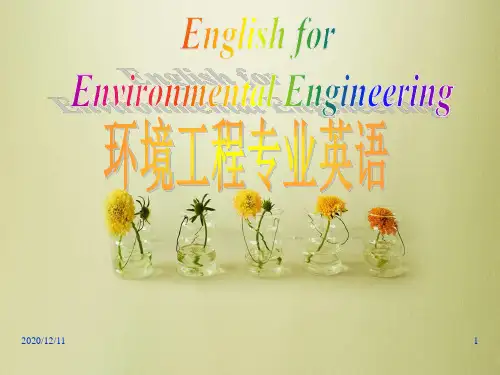
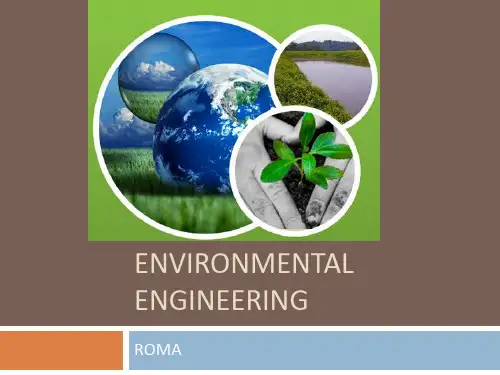
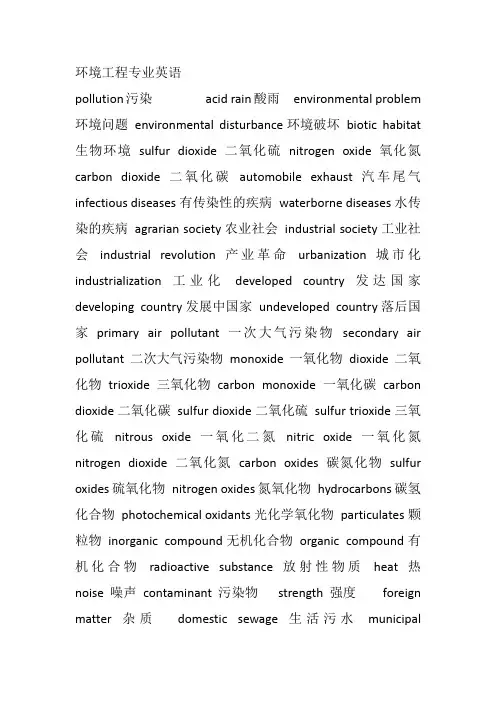
环境工程专业英语pollution污染acid rain酸雨environmental problem 环境问题environmental disturbance环境破坏biotic habitat 生物环境sulfur dioxide二氧化硫nitrogen oxide氧化氮carbon dioxide二氧化碳automobile exhaust汽车尾气infectious diseases有传染性的疾病waterborne diseases水传染的疾病agrarian society农业社会industrial society工业社会industrial revolution产业革命urbanization城市化industrialization工业化developed country发达国家developing country发展中国家undeveloped country落后国家primary air pollutant一次大气污染物secondary air pollutant二次大气污染物monoxide一氧化物dioxide二氧化物trioxide三氧化物carbon monoxide一氧化碳carbon dioxide二氧化碳sulfur dioxide二氧化硫sulfur trioxide三氧化硫nitrous oxide一氧化二氮nitric oxide一氧化氮nitrogen dioxide二氧化氮carbon oxides碳氮化物sulfur oxides硫氧化物nitrogen oxides氮氧化物hydrocarbons碳氢化合物photochemical oxidants光化学氧化物particulates颗粒物inorganic compound无机化合物organic compound有机化合物radioactive substance放射性物质heat热noise噪声contaminant污染物strength强度foreign matter杂质domestic sewage生活污水municipalwastewater城市废水microbe微生物microorganism微生物bacteria细菌total solids总固体inorganic constituents无机要素suspended solids (SS)固体悬浮物volatile suspended solids (VSS)挥发性悬浮固体颗粒organic matter有机物质total organic carbon, TOC 总有机碳chemical oxygen demand, COD化学需氧量biochemical oxygen demand, BOD生化需氧量biodegradable可微生物分解的contamination污染recontamination再污染groundwater地下水surface water地表水restriction限制colloid胶体screening隔栅coagulation凝聚flocculation絮凝sedimentation沉淀filtration过滤disinfection消毒chlorination氯化消毒prechlorination预加氯ozonation臭氧消毒aeration曝气softening软化activated carbon活性炭adsorption吸附reverse osmosis反渗透desalination脱盐处理microbial degradation微生物降解biological degradation生化降解biofilm process生物膜法activated sludge process活性污泥法attached-growth吸着生长suspended-growth悬浮生长shock loading冲击负荷organic loading有机负荷mixed liquor suspended solids混合液悬浮固体metabolize使代谢化metabolism新陈代谢dissolved oxygen 溶解氧pretreatment process 预处理工艺primary clarifier初沉池equalization basin均质池biological treatment process生物处理工艺aeration basin曝气池secondary clarifier二沉池biomass生物质heterotrophic bacteria异养菌autotrophic bacteria自养菌hydraulic retention time (HRT) 水力停留时间sludge residence time (SRT) 污泥停留时间solid waste固体废物municipal城市化industrial工业的agricultural农业的hazardous危险的residential住宅的commercial商业的putrescible易腐烂的combustible易燃的flammable可燃的explosive易爆的radioactive放射性的Landfilling土地填埋incineration: 焚烧composting: 堆肥compaction: 压实,紧凑sanitary landfill卫生填埋balance剩下的,余额,结余batch-fed 分批投料refuse垃圾municipal waste城市垃圾perform: 执行shut down: 关闭energy recovery能量回收incomplete combustion不完全燃烧combustion燃烧volume reduction体积缩小anaerobic厌氧硝化中英互译短语Biological degradation生化降解equalization basin调节池aeration basin曝气池sludge blocs 污泥絮体settling tank沉淀池dissolved oxygen溶解氧suspended-growth悬浮生长pulverized refuse垃圾破碎biofilm生物膜well-compacted landfill压实填埋场nutrient source 营养源mass-burning大量燃烧fluidized fed incarceration硫化床燃烧法soil conditioners土壤改良剂温室效应greenhouse effect 由CO2引起的caust by CO2 世界碳预算the world carbon budget 天气自然波动natural fluctuations 全球变暖global warming 厌氧的anaerobic 腐烂Putrefied 甲烷methane 臭氧层ozone layer 气候模型climatic model 正常浓度:normal concentration 严重污染物:heavily polluted 决定因素:determining factor 光化学氧化物:photochemical oxidants 液体微滴:liquid particulates 含硫的:sulfur-containing 放射性物质:radioactiue substance 汽车尾气:automobile exhaust wet oxidation湿式氧化1、Environment is the physical and biotic habitat which surrounds us; that which we can see, hear, touch, smell, and taste. 环境是我们周围的物理和生物环境,我们可以看到、听到、接触到、闻到和品尝到的。

